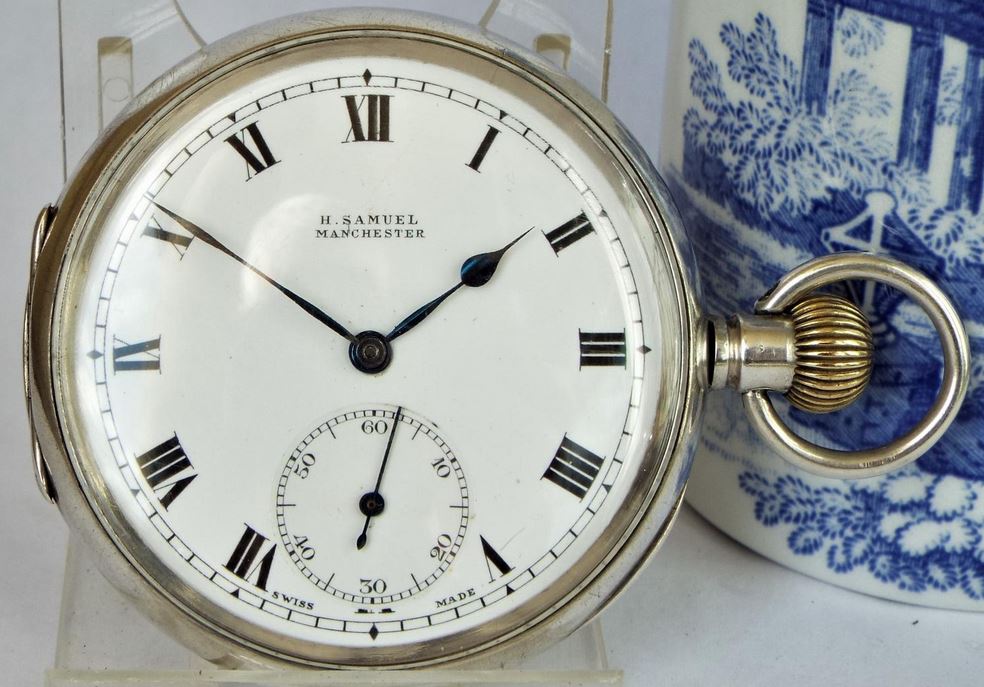If you are interested in antique watches, one name that you will certainly come across is Cyma. It has a long history and perhaps millions of its watches were made. This enormous volume is probably why so many antique Cyma watches are available today. From what I understand they produced decent quality watches for the time using modern manufacturing methods, hence the huge volume. Like many other manufacturers from the time, online historical records are patchy. What I have put together below is by no means definitive. Cyma is pronounced ‘see-mah’.
Origins
Cyma can trace its routes back to the Schwob brothers Joseph and Theodore, who initially established Schwob Frères (Schwob Brothers) in 1862 in La Chaux-de-Fonds, Switzerland. They worked according to the établissage system which involved assembling watches from components derived from multiple Swiss sources. Over the years Schwob Frères registered a number of brand names. In addition, they developed an extensive overseas distribution network, including America, to market and sell their watches.
After thirty years of business, the brothers went into partnership with a watchmaker called Henri-Frédéric Sandoz (1851-1913) who had created a new watch company, Tavannes, in the Jura municipality of the same name. Sandoz had originally started out running a watch manufacturing company in his own name in 1870 in Le Locle. Henri departed from the company in 1889, for unknown reasons, and another family member, Jules Sandoz, continued the business. In 1891, Henri Sandoz set up a watchmaking company in Tavannes, a small municipality in the French-speaking canton of Bern in the Jura mountains.
This company, officially named Tavannes Watch Co. SA, produced watches, watchmaking machinery, and other specialized machines. Sandoz employed modern manufacturing methods and machinery to produce his own calibres (watch movements). Tavannes is in a French-speaking canton so the s is silent, it should be pronounced ‘ta-van’.
Partnership with Tavannes
The exact nature of the partnership is unclear. Both of the companies remained separate entities and both exist in some form today. It’s not totally clear if the current versions of companies have been continuously trading or if they are a resurrection of the brand name for the sake of claiming heritage. Either way, I am not concerned as I am only interested in antique watches.
I suspect it was a mutually beneficial arrangement between Schwob Frères and Tavannes. Schwob Frères benefited from modern manufacturing processes and volumes. Tavannes benefited by being able to access the well-developed distribution network of Schwob Frères, established over their 30 years in the business. This instantly gave the Tavannes Watch Co. access to a large market, including America, without having to develop it from scratch.
Cyma brand name
In 1903 Schwob Frères registered the brand name Cyma. The name Cyma is derived either from the French word “cime”, meaning “crown or summit” or from the Latin word “cyma”, meaning “sprouts”. I suspect the former as being a more suitable name for a quality watch. Cyma is pronounced see-mah. Online, there are alternative translations for the French word “cime”, with some sources suggesting it translates to “summit”. I have taken my translation from Google Translate.
Using the most modern of manufacturing processes, Tavannes produced very high-quality time-pieces, trademarked as Tavannes, Cyma and Cyma Tavannes. By 1908, Cyma was advertising the resilience of their timepieces when exposed to electricity, magnetism and varying temperatures. Even basic models were very accurate and many were consequently sold as officially tested chronometers. The quality of the product allowed the Tavannes/Cyma partnership to develop into one of the largest Swiss watch manufacturers by 1910.
Awards
There are a number of awards that are claimed by Cyma on the current company website. In 1903, it was awarded the coveted chronometer certificate issued by the Neuchâtel Observatory for its invention of a new extra-flat lever movement fitted inside a pocket watch. Two years later, Cyma introduced the calibre 701 with a thickness of just 3.85mm, a considerable achievement for the period. In recognition of its watchmaking feats, the company won first prize for accuracy at the World Fair in Brussels in 1910. What is not clear is if these awards were actually won by Tavannes and claimed by Cyma as a result of their association. I suspect that they were actually won by Tavannes and appropriated by Cyma. Try as I may, I cannot find a list of prizes for the World Fair or for the Neuchâtel Observatory certification.
From 1915, Cyma’s highly skilled designers and technicians were creating shock-resistant movements and examples of the first waterproof watches. By the 1920s, Cyma had followed the growing trend to standardise watch part manufacture. However, typical of the company, it wasn’t enough to just produce parts that were interchangeable. They had to make precision-made components to ensure long term accuracy.
The company is currently owned by Stelux International, Ltd. a Hong Kong-based holdings firm that invests primarily in fine jewellery and watches. It is overseen by fellow Fédération de L’industrie Horlogère Suisse member Universal Genève. Since its inception, Cyma has produced over 30 million watches worn worldwide. The Schwob Frères company has disappeared without a trace.
